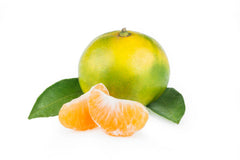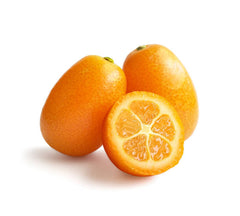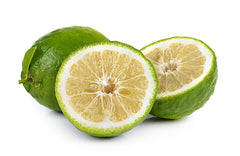What Does Milk Smell Like?
Black Friday Fragrance Deals
Click For Affordable Inspired Perfume Alternatives

Embark on a sensory journey to the dairy farm and explore the wholesome aroma of milk. A staple in households around the world, milk carries a distinct fragrance that evokes memories of freshness and nourishment. Join us as we unravel the question: What does milk smell like?
What Does Milk Smell Like?
The fragrance of milk is a comforting and familiar scent that encapsulates the essence of purity and nourishment. Imagine the subtle sweetness of fresh cream combined with a touch of warm, wholesome richness. Milk's scent is a celebration of dairy goodness, offering a comforting and nostalgic olfactory experience.
Creamy Sweetness: A Dairy Symphony
Approaching milk, the first olfactory impression is a wave of creamy sweetness, reminiscent of fresh, unadulterated dairy. Picture the comforting scent of warm milk gently steaming on the stovetop, releasing a luscious aroma that fills the air. Milk's fragrance is a symphony of creamy sweetness, instantly transporting you to a cozy kitchen with its wholesome and inviting character.
Warm Nourishment: A Homely Embrace
The scent of milk carries an inherent warmth that envelops you in a homely embrace. It captures the nurturing quality of this essential liquid, evoking images of a motherly touch and the comfort of a well-loved home. Milk's aroma is a testament to the nourishment it provides, creating a comforting and reassuring olfactory experience that resonates with warmth and familiarity.
Fresh Dairy Whiff: Morning Uplift
Milk's fragrance is akin to a breath of fresh air in a dew-kissed meadow. It embodies the crisp and clean aroma of dairy, reminiscent of a morning breeze sweeping through a countryside dairy farm. The freshness of milk's scent is invigorating, creating a sensorial experience that echoes the purity of farm-to-table goodness.
Subtle Sweetness: Nature's Elegance
While predominantly creamy, there's a subtle undercurrent of sweetness in milk's scent. This delicate sweetness adds an elegant dimension to the fragrance, creating a well-balanced composition that is both comforting and subtly sweet. Milk's aroma is a delightful interplay of creaminess and sweetness, reminiscent of the wholesome goodness found in nature's bounty.
Nurturing Comfort: Essence of Home
Delve deeper into the scent, and you may notice a nurturing comfort that characterizes milk's fragrance. It's as if the aroma carries the essence of familial warmth and the timeless ritual of sharing moments over a glass of milk. The comforting and familiar nature of milk's scent creates a heartwarming and soothing olfactory experience.
Milk's Homely Harmony
Hence, milk's fragrance is a homely harmony of creamy sweetness, warm nourishment, fresh dairy whiffs, subtle sweetness, and nurturing comfort. It stands as a testament to the essential and comforting qualities of this everyday staple, offering a sensory experience that is both familiar and heartwarming. Milk, with its wholesome and inviting aroma, invites us to savor the simple joys found within its essence, a fragrant journey that unfolds with every comforting whiff.
Factors Influencing the Scent of Milk:
Milk's fragrance is a result of various factors that contribute to its wholesome and comforting aroma. Here are several factors that influence the scent of milk:
Dairy Source and Animal Diet: The type of milk, whether from cows, goats, or other animals, can impact the fragrance. Additionally, the diet of the animals contributes to the composition of the milk's aroma.
Processing Methods: Different processing methods, such as pasteurization or homogenization, can influence the scent of milk. These methods affect the overall freshness and character of the fragrance.
Temperature and Storage Conditions: The temperature at which milk is stored, as well as the conditions of storage, can impact its scent. Proper refrigeration helps maintain the freshness of the milk and its aromatic qualities.
Fat Content: The fat content in milk contributes to its creamy aroma. Whole milk, with higher fat content, may have a richer fragrance compared to skim or low-fat varieties.
Freshness: The freshness of milk is crucial to its scent. Freshly milked or newly opened milk exhibits a more vibrant and inviting fragrance compared to milk that has been stored for an extended period.
Seasonal Variations: Seasonal changes, including factors like the animal's diet, can influence the scent of milk. Milk sourced during different seasons may have nuanced differences in fragrance.
Packaging Material: The material used for packaging can affect the aroma of milk. Glass, plastic, or carton packaging may subtly influence the overall olfactory experience.
Environmental Factors: The environment in which the milk is produced, including the cleanliness of the dairy farm and the air quality, can impact the fragrance. A clean and well-maintained environment contributes to a more appealing scent.
Milk Type: Different types of milk, such as cow's milk, goat's milk, or sheep's milk, have distinct fragrances. Each type carries its own unique olfactory profile, adding diversity to the world of milk aromas.
Organic vs. Conventional: The farming practices, whether organic or conventional, can influence the scent of milk. Organic milk, sourced from animals raised without synthetic additives, may offer a fragrance that reflects its natural and wholesome origins.
In Conclusion
Milk, with its comforting and familiar fragrance, invites us to appreciate the simple pleasures of life. Its creamy sweetness, warm nourishment, and fresh dairy whiffs create a sensorial experience that transcends the ordinary. So, the next time you encounter the delightful scent of milk, let it transport you to a cozy kitchen or a sunlit meadow, where the aroma of dairy goodness fills the air.
-
Can milk be used in perfumery?
- Yes, milk and its derivatives are sometimes used in perfumery to add creamy and lactonic nuances to fragrances.
-
What is lactonic in perfumery?
- Lactonic refers to a note that resembles the scent of milk or dairy products. It is often used to impart a creamy and comforting quality to perfumes.
-
Which milk derivatives are commonly used in perfumery?
- Milk solids, milk fats, and lactones (organic compounds responsible for the lactonic scent) are commonly used in perfumery.
-
How is milk incorporated into perfumes?
- Milk notes can be added through synthetic compounds like lactones or by using natural extracts from milk and dairy products.
-
What fragrances pair well with milk notes?
- Vanilla, coconut, floral notes (especially white flowers), and gourmand accords often complement milk notes in perfumery.
-
Are there any challenges in using milk in perfumery?
- The challenge lies in maintaining the stability of the milk components in the fragrance and preventing spoilage or unpleasant odors over time.
-
Can lactose-intolerant individuals use milk-based perfumes?
- Yes, since the lactones and milk notes in perfumery are synthetic or derived from milk extracts, they do not contain lactose and are generally safe for lactose-intolerant individuals.
-
Do milk-based perfumes smell like fresh milk?
- Milk-based perfumes can evoke the creamy and comforting aspects of fresh milk, but the scent may vary depending on the other ingredients in the fragrance.
-
Are there any cultural associations with milk in perfumery?
- Milk is often associated with nurturing and comfort, so fragrances with milk notes may evoke feelings of warmth and security.
-
Can milk notes be found in niche or mainstream perfumes?
- Milk notes can be found in both niche and mainstream perfumes, as they contribute to various olfactory profiles.
-
Are there any famous perfumes with prominent milk notes?
- Some perfumes, such as "Milk of Flowers" by Ramón Monegal, highlight milk notes as a central theme.
-
Can milk notes be combined with citrus scents in perfumery?
- Yes, the combination of milk and citrus notes can create interesting and unique fragrances, balancing freshness with creaminess.
-
Are there any potential allergic reactions to milk-based perfumes?
- Individuals with dairy allergies should exercise caution, but generally, the lactones used in perfumery are not known to cause allergic reactions.
-
How does the concentration of milk affect the overall fragrance?
- The concentration of milk notes can impact the intensity and longevity of the fragrance, influencing the overall olfactory experience.
-
Can milk notes be used in unisex or masculine fragrances?
- Yes, milk notes can be versatile and used in a variety of fragrances, including unisex and masculine scents.
-
Are there environmental concerns with using milk in perfumery?
- Sustainability concerns may arise due to the environmental impact of dairy production, but synthetic alternatives can mitigate these issues.
-
Can milk-based perfumes be used in aromatherapy?
- Milk notes in perfumery are not traditionally associated with aromatherapy, but the comforting aspects may have a positive psychological impact.
-
Can milk notes be blended with spicy or woody accords?
- Yes, the creamy quality of milk notes can complement spicy and woody accords, adding depth and complexity to the fragrance.
-
Are there any regulations regarding the use of milk in perfumery?
- Regulatory bodies may have guidelines on the use of certain ingredients, but in general, the use of milk notes in perfumery is subject to industry standards.
-
Can milk-based perfumes be used in combination with other dairy-themed products like lotions or candles?
- Yes, using milk-themed products across different categories, such as perfumes, lotions, and candles, can create a cohesive and immersive sensory experience.
Buy Perfumes - Best Online Retailers
Click For Affordable Inspired Perfume Alternatives
Click For The Best Niche Perfumes & Decants
Pheromone Perfumes - Confidence, Attraction & Appeal - Click For More
Home Fragrances & Candle Warmers - Click To Scent Up Your Spaces Today!



